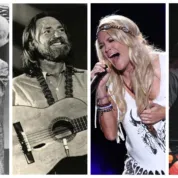
Country music is a vibrant storybook of America's heart and soul. A journey that narrates the stories of the people and places that shaped it. The distinct characteristics that emerge as a new music genre evolves is what separates it from other genres, creating it's niche individuality and making it appealing to fans. Rock was characterized by electric instruments and vocal-centric song structure, while Hip Hop was defined by its beat, lyricism and sampling. Throughout the history of country music 5 distinctive characteristics have shaped it as well. Molding it into the beloved and enduring part of American culture that we know today.
Origins of Country Music
Country music is a genre that emerged from the heartlands of the United States, primarily in the southern regions, becoming deeply rooted in American culture. Its origins can be traced back to the early 20th century, where it began as a fusion of various musical traditions brought by European immigrants and African-American influences. This blend of styles gave birth to a unique sound characterized by its storytelling, often reflecting the life and struggles of rural and working-class America. The genre's early sounds were defined by a mix of folk harmonies, string instruments such as the banjo and guitar, and a distinct vocal twang, which became its signature.
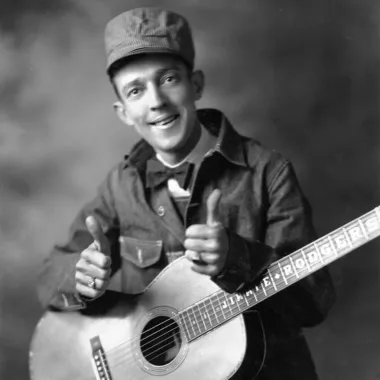
As the characteristics of country music evolved, they maintained the core elements of storytelling, but its themes expanded to encompass a broader range of life experiences and emotions. This genre is known for its confessional lyrics, where artists often share personal stories or convey messages that resonate with their listeners. The narrative nature of country songs, combined with the instrumental characteristics of country music, creates a connection between the artist and the audience that is both intimate and relatable. From the early days of Jimmie Rodgers and the Carter Family to contemporary artists like Taylor Swift and Miranda Lambert, country music has continuously adapted, blending the traditional characteristics of country music with modern influences, thereby ensuring its enduring appeal and relevance
History of Country Music
From its humble beginnings in the rural landscapes of America to its ascent onto the global stage, country music has been a mirror reflecting the trials, triumphs, and transformations of society. As we delve into the early 20th century, we find the genre's roots intertwining with the diverse cultural influences of the time, laying the foundation for what would become a uniquely American soundtrack. The 1920s and 1930s marked a pivotal era, where the blending of European folk traditions with African-American musical elements gave birth to the early, distinctive sounds that defined the initial characteristics of country music, setting the stage for its dynamic evolution.
The Evolution of Country Music from the 1950s to the 2000s
Who Invented Country Music? (1920s-1930s)
The roots of the characteristics of country music are deeply entwined with the cultural tapestry of the United States, particularly in the rural South. The genre's early days in the 1920s and 1930s were marked by a fusion of diverse musical traditions. Immigrants from Europe brought with them folk music, characterized by string instruments like the fiddle and acoustic guitar. These sounds merged with the blues and gospel traditions of African Americans, creating a unique musical blend.
Key figures in this era include Jimmie Rodgers, often referred to as the "Father of Country Music," whose yodeling and blues-infused songs set a precedent for future artists. The Carter Family, with their harmonious blend of traditional folk and Christian hymns, also played a pivotal role in shaping the early country sound. These artists' recordings at the famous Bristol Sessions in 1927 marked a significant moment in country music, often considered its "Big Bang."
Golden Age of Country Music (1940s)
The 1940s saw the rise of what many consider the Golden Age of country music. This era was marked by an increase in commercial success and mainstream acceptance. The genre began to branch out with sub-genres like Western Swing, popularized by artists like Bob Wills and his Texas Playboys, blending the traditional characteristics of country music with elements of jazz and swing.

World War II had a profound impact on the genre, as themes of love, loss, and patriotism became prevalent in the music. The war also brought country music to a broader audience, with soldiers from different regions of the U.S. being exposed to it during their service.
Nashville Sound and Countrypolitan Music (1950s-1960s)
Post-war America saw significant changes in the characteristics of country music, particularly with the emergence of the "Nashville Sound." This style, developed in the 1950s and 1960s, sought to broaden th appeal of the characteristics of country music by incorporating elements of pop music. Pioneers like Patsy Cline and Jim Reeves utilized lush string arrangements and background vocals, making the sound more palatable to a mainstream audience.
Simultaneously, the "Countrypolitan" movement emerged, blending traditional country with pop stylings. This era was significant for bringing more polished productions and smoother sounds to country music, moving away from its raw, rustic roots.
Outlaw Movement and Southern Rock Influence (1970s)
The 1970s marked a period of rebellion in country music with the "Outlaw" movement. Artists like Waylon Jennings, Willie Nelson, and Johnny Cash, dissatisfied with the constraints of the Nashville sound, began producing music that returned to the grittier characteristics of country music. This movement was characterized by its rough-around-the-edges style and themes of rebellion and personal freedom.
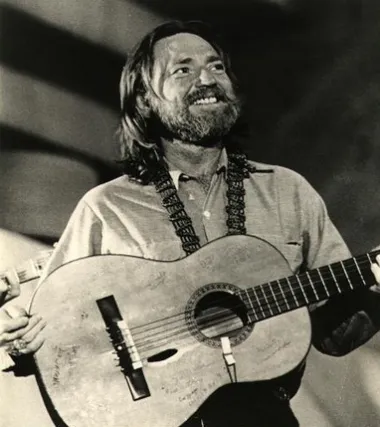
Simultaneously, the influence of Southern rock became evident, with artists like the Charlie Daniels Band blending rock and country, further diversifying the genre's sound.
Urban Cowboy and the Pop Crossover (1980s)
The 1980s witnessed the "Urban Cowboy" movement, inspired by the eponymous film. This era saw the characteristics of country music adopt a more polished, pop-oriented sound, with artists like Dolly Parton and Kenny Rogers achieving significant crossover success. The genre's appeal expanded, reaching urban audiences and gaining international recognition.
The Commercial Boom (1990s)
The 1990s represented a commercial peak for country music, with artists like Garth Brooks, Shania Twain, and the Dixie Chicks achieving immense success. This decade was characterized by blending the traditional characteristics of country music with pop and rock influences, leading to widespread commercial appeal and record-breaking album sales.
Diverse Influences and Modern Sounds (2000s)
The turn of the millennium saw country music continuing to evolve, embracing an even wider array of influences. Artists like Taylor Swift and Keith Urban merged contemporary pop and rock elements into the characteristics of country music, further expanding the genre's audience. The rise of streaming platforms and social media also played a significant role in promoting diverse voices within the genre, leading to an era of unprecedented variety and experimentation.
Contemporary Trends and Future Directions
Today, the characteristics of country music are more varied than ever, with sub-genres ranging from bro-country, characterized by themes of partying and rural pride, to Americana, which blends traditional country with folk, blues, and roots music. Artists like Chris Stapleton and Miranda Lambert have gained acclaim for their authentic, soulful approaches, while others like Lil Nas X have challenged traditional genre boundaries with cross-genre collaborations.

The future of the country genre seems poised to continue this trend of diversity and innovation, drawing from the rich history of country music while embracing new sounds and technologies. As it evolves, the characteristics of country music remain a vital and dynamic part of American cultural heritage, continually reflecting the changing face of the nation while staying true to its roots in storytelling and emotional expression.
The 5 Characteristics of Country Music
Like other genres we've covered, including the characteristics or Rock and Hip Hop, Country music is also characterized by distinct elements that have shaped its sound and appeal. These characteristics of country music not only define the genre but also connect deeply with its audience, reflecting the everyday experiences and emotions of its listeners. From the rustic strum of a guitar to the heartfelt lyrics, each element plays a crucial role in crafting the country music narrative.
1. Folk Harmonies
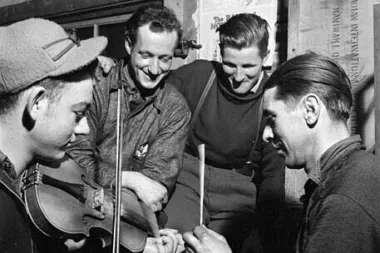
The essence of country music's soul lies deeply embedded in its folk harmonies. Originating from the Appalachian mountains and the deep rural South, these harmonies are a testament to the genre's humble beginnings. They are a blend of various European and Celtic traditions, adapted and evolved over generations. The harmonies in country music are not just musical arrangements; they represent a narrative - a story told through voices that blend together in unity. This unity is a hallmark of the genre's communal nature, reflecting its origins in gatherings, where music was a communal experience rather than just a performance.
Folk harmonies in country music often feature simple, yet emotionally powerful melodies. They are designed to be sung by ordinary people, resonating with the everyday experiences of love, loss, and hope. The Carter Family, one of the groups that pioneered the characteristics of country music, epitomized this style with their pure, heart-touching harmonies. Their music wasn’t just about the melody; it was about conveying a message, a sentiment, that listeners could relate to and find solace in. The tradition of folk harmonies has been carried forward by artists who have blended it with contemporary sounds, yet the essence remains – a connection to the roots, to the stories of the land and its people.
2. String Instruments

String instruments are the lifeblood of the characteristics of country music. The genre's sonic landscape is unimaginable without the twang of a banjo, the strum of a guitar, the fiddle's wistful cry, or the mournful wail of the steel guitar. Each of these instruments carries an important piece of the evolving history of country music. The guitar, for instance, is central to country music's narrative. It started as a rhythm instrument, providing a steady backdrop for vocals, and evolved into a lead instrument, capable of expressing a wide range of emotions.
The banjo, with its African origins and adaptation in the American South, adds a rhythmic complexity and a distinctive sound that is integral to certain styles within the genre, like bluegrass. The fiddle, brought over by European immigrants, has a voice that can range from joyful and lively to haunting and melancholic. It's an instrument that speaks to the heart of country music's ability to express the full gamut of human emotions. Lastly, the steel guitar, with its sliding notes, adds a layer of emotional depth and has become synonymous with the sound of classic country. These string instruments, individually and collectively, form the foundation upon which the characteristics of country music are built, each adding its unique voice to the genre's rich tapestry.
3. Twangy Vocals
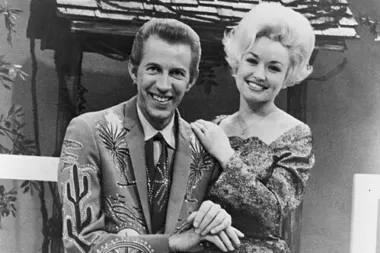
Twangy vocals are as much a signature characteristic of country music as any instrument. This vocal style, characterized by its sharp, nasal, and sometimes plaintive quality, is deeply rooted in the Southern United States. It's a sound that immediately evokes the genre's rustic origins and rural spirit. The twang is not just an accent; it is an expression of identity, a nod to the genre's heritage. It conveys authenticity and connects the music to its geographical and cultural roots.
Twangy vocals in country music serve to enhance the emotional delivery of the lyrics. This unique vocal style adds a raw, unpolished quality to the music, making it feel more genuine, more relatable. It's as if the singer is not just performing a song, but living through it, sharing their story with every note. This style of singing has been mastered by legends like Hank Williams, whose lonesome, plaintive voice became the sound of classic country, and Dolly Parton, whose clear, vibrant twang has charmed generations. Modern artists have adapted this vocal style, blending it with other influences, yet the twang remains a defining element, a thread that connects the genre's past with its present.
4. Confessional Lyrics

The heart of country music lies in its confessional lyrics. This genre is renowned for its storytelling, where songs are not just melodies but narratives steeped in truth, emotion, and experience. These lyrics often delve into personal and universal themes – love, heartbreak, struggle, triumph, and the everyday joys and sorrows of life. They are candid, unguarded, and profoundly relatable, allowing listeners to see their own lives reflected in the songs.
Confessional lyrics in country music are a bridge between the artist and the audience. They create an intimate space where listeners can connect with the emotions and stories being conveyed. This form of lyrical storytelling is powerful; it's about sharing experiences that are often deeply personal yet universally understood. The genre has been graced by prolific songwriters like Johnny Cash, whose narratives often reflected his own life's trials and tribulations, and more recently, artists like Taylor Swift, who has used her songwriting to create a deeply personal connection with her audience. These artists' ability to articulate their innermost thoughts and feelings in song has cemented country music's place as a genre that not only entertains but also empathizes and connects.
5. Frequent Duets

Duets in country music are a celebration of harmony and storytelling. They are an integral part of the genre's tradition, often used to explore various dimensions of a narrative or to present different perspectives within a song. These collaborations can range from romantic ballads to playful banter, each duet adding a unique dynamic to the genre's sound. The blending of voices in a duet creates a musical conversation, a dialogue that adds depth and complexity to the song's narrative.
Country music duets are memorable not just for their harmonies but for the chemistry between the artists. They offer a space for interaction and storytelling that is different from solo performances. Classic pairings like Johnny Cash and June Carter Cash showed how duets could convey a playful yet deep connection, their voices intertwining to tell a story of love and companionship. Modern duets continue this tradition, with artists collaborating across genres, bringing fresh perspectives and styles to the country music scene. These collaborations highlight the genre's versatility and its ability to evolve, all while staying true to its roots in storytelling and emotional expression.
The Enduring Echo of Country Music
As we reflect on the rich history of country music and its distinct characteristics, it's noteworthy to consider its global influence. Beyond the borders of the United States, country music has found enthusiastic audiences in places as diverse as Japan and Australia, illustrating its universal appeal. This global reach underscores the genre's ability to transcend cultural barriers, connecting people worldwide through its relatable themes and heartfelt melodies. Country music's journey, from humble American beginnings to international acclaim, is a remarkable testament to its enduring impact and universal human appeal.

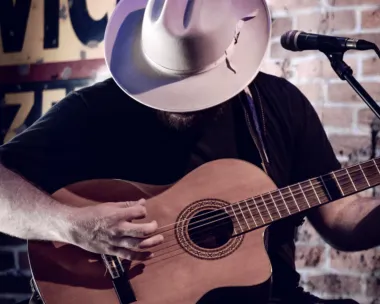


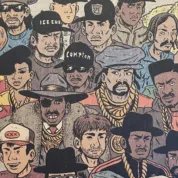


Leave a Reply!
It is a good plays to look for stuff!
Country music has come a LOOOOONG way!
yes